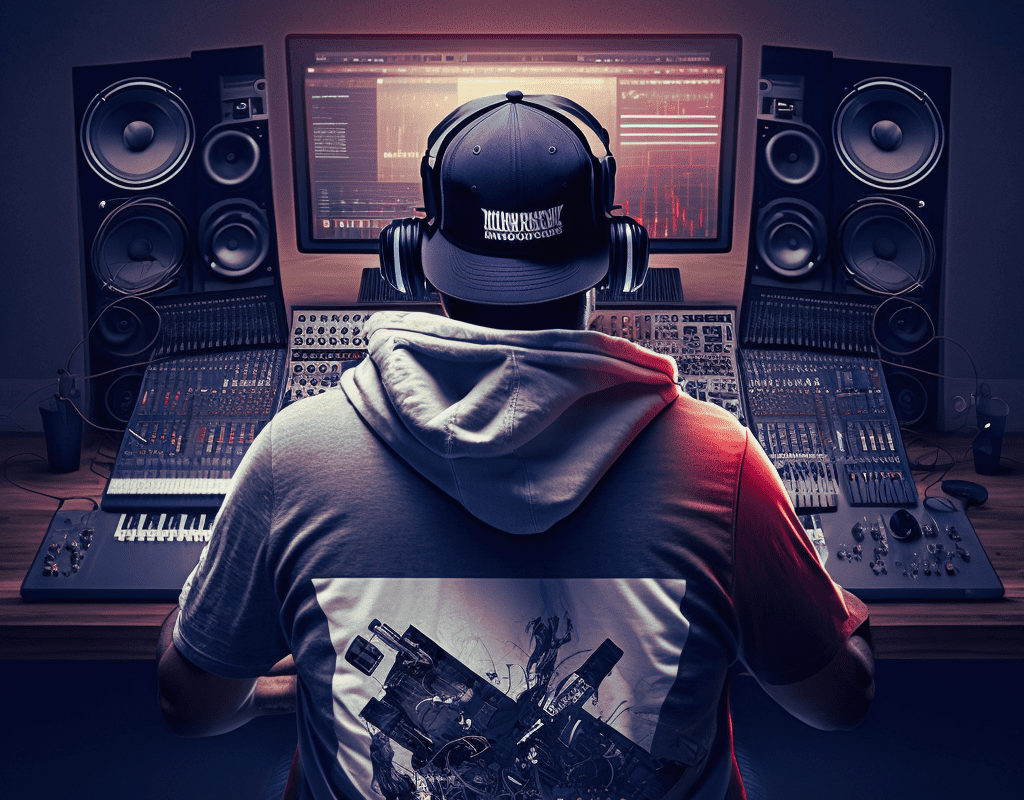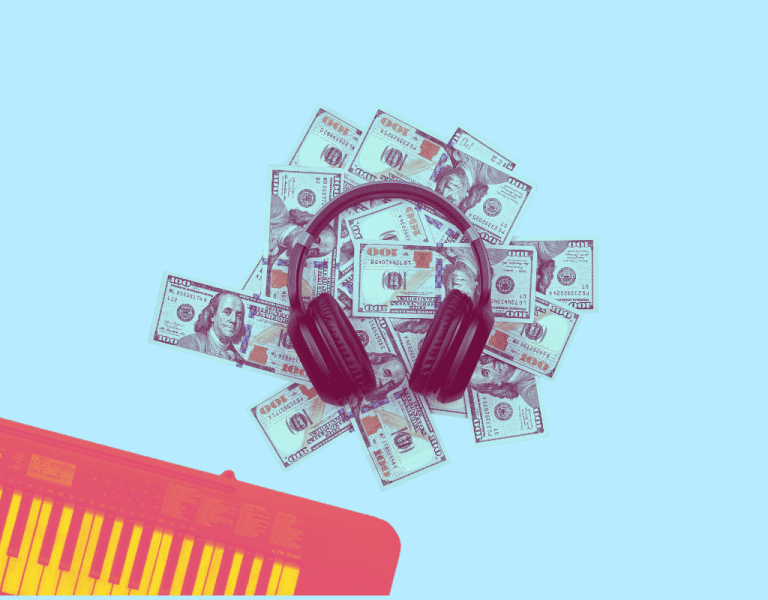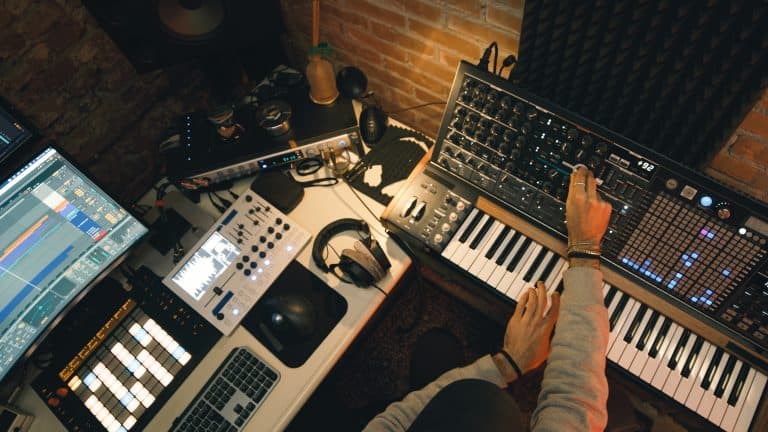Where To Start With Music Production: A Beginner’s Guide
Are you ready to take your music production skills to the next level?
Starting with music production can be daunting, but it doesn’t have to be.
Whether you’re a novice or an experienced producer seeking fresh inspiration, this article will provide guidance to begin producing music.
We’ll cover everything from essential equipment and tools needed in any studio setup through learning digital audio workstations (DAWs) and plugins so that no matter what kind of soundscape you want to create, we’ve got all the information right here.
So if “where to start with music production” is something that’s been keeping up at night, then read on – let’s get creative.
Key Takeaways:
Where To Start With Music Production
Music production creates and manipulates audio recordings to create a finished musical product.
It involves recording, editing, mixing, and mastering sounds to create music that meets the desired artistic standards.
Whether you’re an experienced producer or just starting, understanding the basics of music production can help you make better music faster.
Essential Needs
To become a successful music producer, you’ll need skills such as:
- Technical proficiency with your equipment and software
- Musical creativity
- The ability to work well with others.
Software for Music Production: Choosing the Right DAW for Your Studio
For any musician looking to create music, having the essential equipment is critical; a Digital Audio Workstation (DAW) is one for recording and mixing audio tracks.
The most important equipment is a Digital Audio Workstation (DAW).
This software can record, modify and mix audio tracks into a single composition.
Here are some of the best options for music production:
- Ableton Live: Versatile and suitable for all genres. Offers a unique session view for live performances and improvisation.
- Logic Pro: Powerful and intuitive software exclusive to macOS. Comes with a vast library of sounds and plugins.
- Pro Tools: Popular in professional studios, known for advanced editing and mixing capabilities.
- FL Studio: Popular with electronic music producers, intuitive interface, and powerful sequencing capabilities.
Choosing the right DAW depends on many factors, including your budget, skill level with computers/software programs, desired features (such as automation capabilities), workflow preferences (like linear vs. non-linear), compatibility with other hardware/software products, etc.
Once you have chosen a DAW, start familiarizing yourself with its features by taking tutorials or watching videos online; this way, when it comes time to begin producing your songs, everything will seem more natural rather than overwhelming.
Setting Up Your Home Studio
Creating a home studio for music production has become much simpler with today’s technology.
Novice and seasoned producers can benefit and improve their skills from a dedicated space.
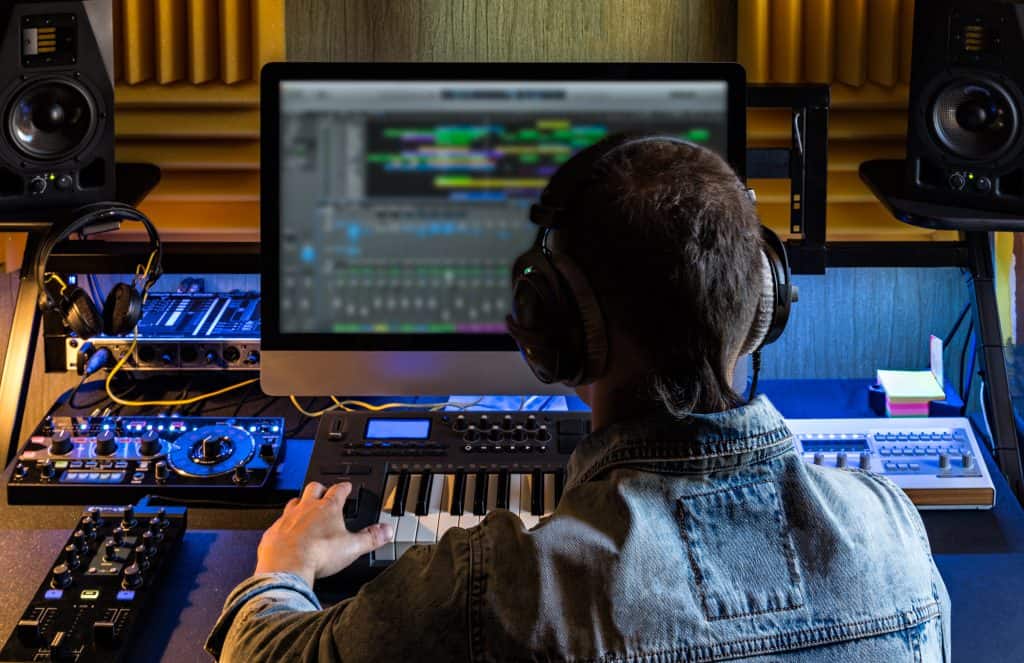
The following are the fundamental components of laying out your home studio for audio production:
- Computer: Investing in a specific computer that can handle the demands of your Digital Audio Workstation (DAW) and plugins will ensure you have a powerful music production setup.
- Studio monitors: Studio monitors are a key element to accurate sound production. Find a pair suitable for your space and the genre of music you create.
- Audio Interface: An audio interface links your equipment with the computer and enhances audio recording quality.
- MIDI Controller: A MIDI controller is an important asset when producing music since it lets you control the DAW and plugins through physical buttons, sliders, or knobs – useful for live performances or injecting a human touch into recordings.
- Headphones: Investing in reliable studio headphones should also be high on your list – they let you pinpoint fine details and nuances, crucial for crafting great tracks. Studio headphones are designed for monitoring and mixing, making them invaluable to any home studio setup.
Getting started with music production can be daunting, but understanding the basics and knowing what equipment you need to get started will make your journey much easier.
Now that we’ve got the groundwork for getting into music production, let’s delve further and explore how to utilize those instruments to craft remarkable works of art.
Creating A Good Music Production Environment
Setting up a home studio is a great way to produce your music, but it can be daunting. Here are some tips for getting started:
1) Choose the Right Space – Look for a quiet, well-ventilated room with enough space for your equipment and instruments. Avoid rooms with hard surfaces, which can cause unwanted echoes and reflections.
2) Invest in Essential Equipment – Purchase a computer, DAW software, studio monitors, and an audio interface. Consider buying a MIDI controller, microphone, headphones, and other tools.
3) Acoustics – Use acoustic treatments like sound panels, bass traps, and diffusers to minimize reflections or echoes in your recordings. This will help you capture the true sound of your music without any outside interference.
4) Cable Management – Keep all your cables neat and tidy using cable ties, covers, and organizers. Not only will this make your studio look better, but it will also prevent them from becoming tangled or damaged over time.
5) Lighting – Provide adequate lighting for visibility but avoid harsh overhead lights that can lead to glare or eye strain. Consider soft indirect lighting that can easily be adjusted according to what works best for you at any given time.
6) Ergonomics – Make sure that all of your furniture is at the right height and position to avoid discomfort or fatigue when recording music over long periods — this includes chairs, desks, and any other equipment used in the studio environment.
Building a Home Music Production Studio on a Budget
Building a home music production studio can be an excellent way to create high-quality music without expensive studio time, but it’s important to budget carefully.
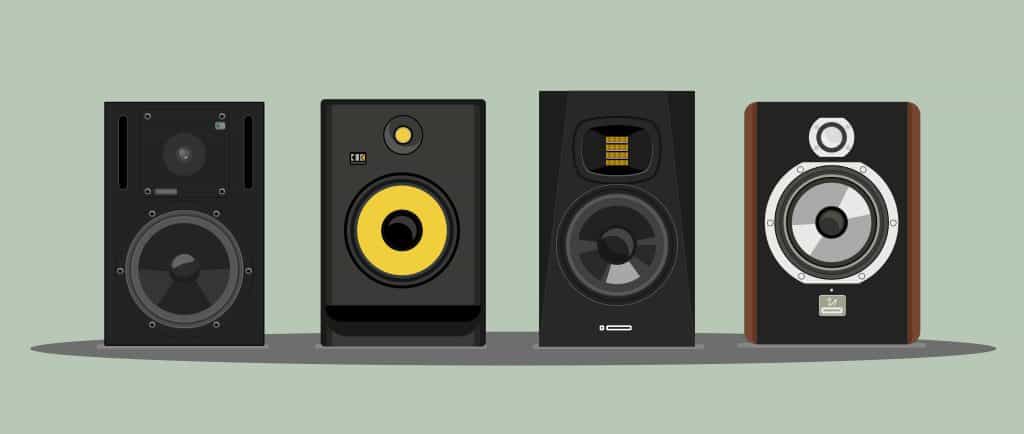
Here are some tips to help you save money when building a home music production studio:
- Start with a clear budget: Before making any purchases, set a realistic budget for your studio setup and stick to it.
- Prioritize essential equipment: Focus on buying essential items such as a computer, digital audio workstation, audio interface, and monitors first. These are the most important components of any home studio setup and will have the greatest impact on the quality of your music.
- Look for deals and discounts: Do your research! Compare prices and check for discounts or sales on equipment and software that can help you stretch your budget further.
- Consider used equipment: Buying used equipment is a great way to save money – inspect items carefully before purchasing. Sites like Reverb and eBay can be good sources of used gear.
- Use free or low-cost programs and plugins: Many free or low-cost digital audio workstations (DAWs) and plugins offer the features you need to produce high-quality music without breaking the bank. Popular free DAWs include Audacity and GarageBand, and many free or affordable plugins are also available.
- DIY solutions: Think about making DIY acoustic treatment solutions instead of buying expensive pre-made options – building acoustic panels and bass traps can help save money!
By following these tips, you’ll be able to find ways to produce professional results within your budget – so start planning that dream project studio today!
Learning the Basics of Music Production
Music-making is a craft that necessitates expertise, imagination, and drill.
Initially, it is important to know the various sounds and plugins available for music production to determine which ones are most suitable for your project.
The first step is understanding the different types of sounds and plugins available.
This includes understanding what each type does, how they work together, and which ones are best suited for your project.
Once you grasp these concepts well, it’s time to develop your creative process for making music.
This involves exploring different musical ideas and experimenting with sound design techniques until you find something that resonates with you.
We recommend delving into plugins to find the perfect sound or effect.
From distortion plugins such as Amplitube and Guitar Rig 5 Pro to reverb options like Valhalla Reverb and Waves H-Reverb, there are many choices out there.
For any issues encountered, experienced producers on KVR Audio are a great source of assistance and knowledge, having tested their techniques extensively.
It’s also important to remember about learning traditional instruments when starting in music production – playing an instrument gives one an intuitive understanding of rhythm and harmony, which can be invaluable when producing tracks from scratch.
Finally, trial and error play an important role in any creative endeavor, so make sure not to give up too quickly when faced with complex tasks while becoming a master producer.
Learning the basics of music production is essential for any aspiring producer or musician, and mastering them will open up a world of creative possibilities.
Dedication and effort are key for pushing your music production capabilities to the max, yet you can attain remarkable outcomes with hard work.
Taking Your Music Production Skills to the Next Level
To take your music production skills to the next level, consider the following tools and techniques:
• Utilizing advanced plugins like virtual instruments, sound effects, and mastering tools to create exclusive sounds.
• Experimenting with audio processing like equalization and compression to refine the track’s overall tone.
• Working with experienced producers to gain valuable insight into their workflow.
• Investing in professional studio equipment to achieve a higher production level.
By utilizing these resources, you can create professional-sounding tracks that are unique and creative without compromising on quality.
Conclusion
Music production is an incredibly rewarding and creative art form.
Once you have a firm grasp of the fundamentals and know where to begin, your musical productions can become masterful works of art that are truly unique.
With dedication and practice, anyone can become a master at producing music.
Start your music production journey today by exploring tutorials, reading reviews on the latest equipment and software, and connecting with other producers in the industry.
Take advantage of these resources to become a better producer!
References
https://www.careersinmusic.com/how-to-make-music/
https://musictech.com/guides/essential-guide/beginners-guide-music-production/

